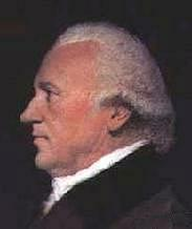- 1610: Galileo
- 1676: Ole Rømer
- 1687: Isaac Newton
- 1781: William Herschel
- 1838: Friedrich Bessel
- 1861: William and Margaret Huggins
- 1912: Henrietta Leavitt
- 1917 Einstein
- 1920: Harlow Shapley
- 1929 Edwin Hubble
- 1948: Ralph Alpher
- 1949: Fred Hoyle
- 1963: Maarten Schmidt
- 1964: Arno Penzias and Robert Wilson
- 1978: Vera Rubin and Kent Ford
- 1989: Margaret Geller and John Huchra
- 1992: John Mather and George Smoot
- 1995: Robert Williams
- 1998: Saul Perlmutter and Brian Schmidt
- 2010: Wendy Freedman
1781: William Herschel Reveals the Shape of our Galaxy
 Even though Galileo’s telescope was very small, he was able to see that the faint band of light across the sky, called the Via Lactea, or Milky Way, consisted of huge numbers of stars. But the significance of that band of light was not clear until William Herschel began his obsession with building truly large telescopes. With these instruments Herschel made two major discoveries that had an important bearing on our understanding of the cosmos. First, that we live in a huge collection of stars called the Milky Way, and second that there are a great many “fuzzy patches” called nebulae, some of which consisted of stars, and others of luminous clouds. He did this work at his own residence, known as Observatory House, in Slough, England.
Even though Galileo’s telescope was very small, he was able to see that the faint band of light across the sky, called the Via Lactea, or Milky Way, consisted of huge numbers of stars. But the significance of that band of light was not clear until William Herschel began his obsession with building truly large telescopes. With these instruments Herschel made two major discoveries that had an important bearing on our understanding of the cosmos. First, that we live in a huge collection of stars called the Milky Way, and second that there are a great many “fuzzy patches” called nebulae, some of which consisted of stars, and others of luminous clouds. He did this work at his own residence, known as Observatory House, in Slough, England.
One of Herschel’s projects was to measure the approximate distance to as many stars as possible. He used the rough approximation that all stars are equally bright. Although today we know that assumption to be wrong, it allowed him to estimate the distance to several hundred stars. His surprising result was that most of the stars are located in a circular band around the sky, suggesting that we are located in a disk of stars, with the plane of the disk aligned with the hazy Milky Way. His measurements suggested that the thickness of the disk was about one-tenth its diameter. However, he had no way to measure the actual size of the disk of stars since he had no way of measuring actual distances.
Today we know that the Milky Way galaxy is a huge cluster of about four hundred billion stars in which most of the stars are indeed concentrated in a flat spiral disk, with a large bulge in the middle. So Herschel’s findings gave a surprisingly good qualitative description of our galaxy.
Herschel’s other major observing program was to study the faint blurry patches of light called “nebulae” (singular “nebula”). With his large telescopes Herschel was the first to see that, like the Milky Way, some of these patches were actually composed of countless individual stars. He assembled the largest catalogue of nebulae to date, with more than 2,500 of them. His work on the nebulae led to one of the important questions in astronomy: Is our Milky Way the only galaxy in the universe which contains all of the nebulae? Or are some of the nebulae actually distant galaxies? If the faint clouds turned out to be huge clusters of stars, then the universe is even bigger than previously imagined.